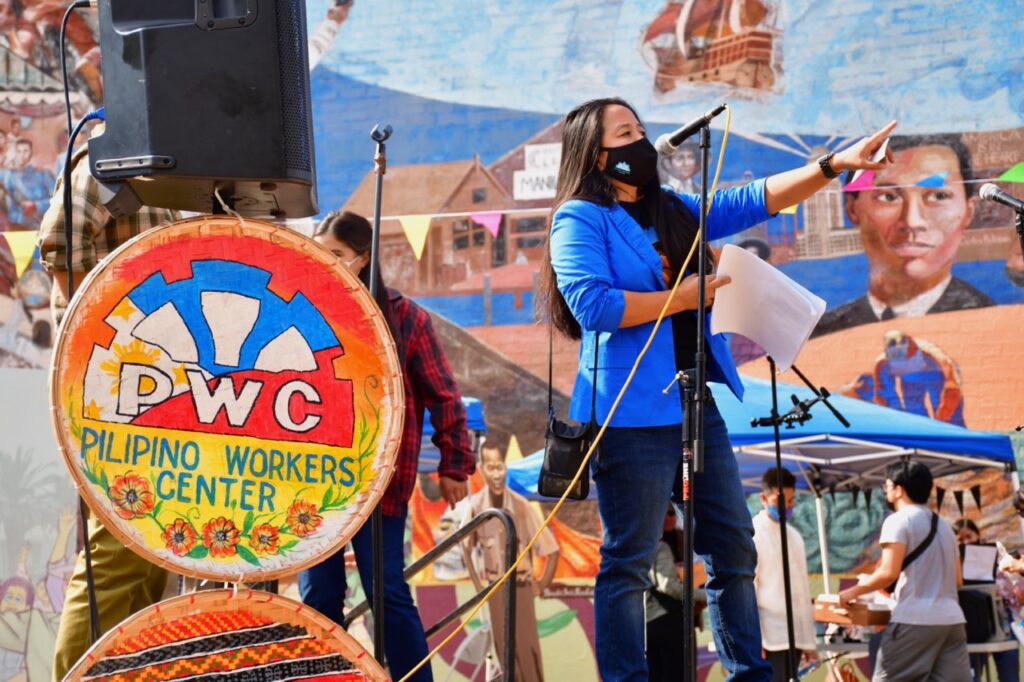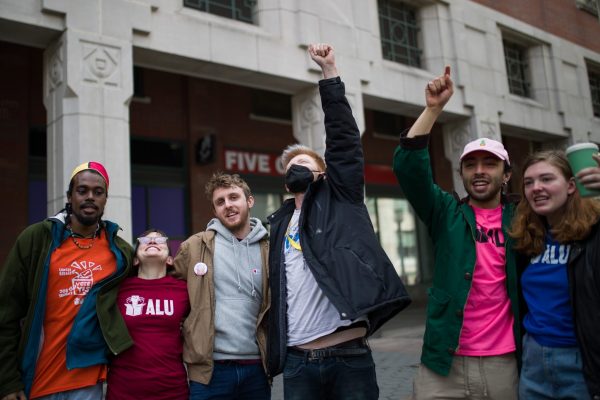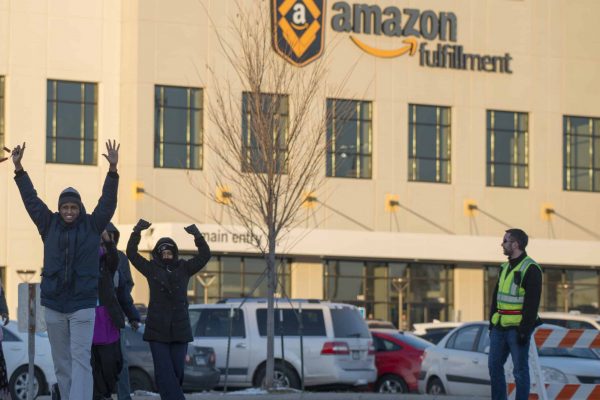In the past decade, social movement groups in the United States have taken increasing interest in electing progressive champions into office. In addition to the creation of the Squad in Congress, this has given rise to a new wave of politicians at the state and local levels—Chicago Mayor Brandon Johnson being a notable recent example—who align themselves with movements and seek to govern in new ways. In some cases, this has also resulted in activists joining city administrations, state offices, and local bureaucracies in leadership positions with the intent to bring a progressive vision into the work of government.
The election of these candidates and the wider turn toward influencing state institutions, however, has led to a variety of fresh challenges. How can officials resist being co-opted into the norms of status quo politics? How can they devise methods for bringing grassroots organizations into the process of governing itself?
A new framework for defending workers’ rights provides some intriguing answers. Co-enforcement is a pioneering model in which government agencies partner with grassroots organizations to investigate workplace violations and uphold labor standards. It is premised on a few simple but powerful inquiries: What would happen if workers themselves, and the organizations they formed—unions, worker centers, and community groups—were given a formal role in making sure bosses respected the law? And what would it look like if social movements, after helping to elect progressive champions, were treated as essential partners in government efforts to promote economic justice?
Too often, government agencies charged with enforcing labor standards are under-resourced and poorly positioned to gain the trust of the most vulnerable workers. As a result, unscrupulous employers can often violate the law with virtual impunity. But by empowering community organizations to be a part of ensuring labor law is respected, these agencies can both expand their capacity to reach the workers who are at the greatest risk of exploitation and improve working conditions across entire sectors of the economy—rather than just trying to target one bad employer at a time.
Equally as important, co-enforcement creates the kind of virtuous cycle known to scholars as a “policy feedback loop,” in which movements gain legitimacy and resources for their work, allowing them to push for even greater change. And it encourages activists to advance a progressive vision of the state: one in which government goes beyond being a neutral bureaucracy and is unafraid to see unions and community groups as key allies in implementing a pro-worker agenda.
Over the past several decades, as progress has stagnated in the U.S. Congress, advances in labor policy have regularly been won at the municipal level instead. And more and more, local governments are turning to social movement partners to help them ensure that bosses comply with the new measures which have become law. The City of San Francisco was an early leader, having established its Office of Labor Standards Enforcement in 2001. When progressive legislators raised the minimum wage two years later, the agency found itself with a greatly expanded mandate but only three staff members to enforce the new law. Ultimately, they joined together with a coalition of community organizations, led by the Chinese Progressive Association, to create a co-enforcement initiative that bolstered the office’s powers, provided funding for community participation, lent agents the cultural and linguistic competency to serve immigrant workers, and formalized the role of grassroots groups in upholding labor rights.
Other cities from Chicago to Minneapolis, Philadelphia, and Los Angeles, as well as Santa Clara county, have since explored similar arrangements, with Seattle budgeting approximately $1.5 million per year for co-enforcement partners. Several state-level agencies have also taken interest in the model, with Julie Su—formerly the Labor Commissioner for the State of California and now the Biden Administration’s Secretary of Labor—offering a high-profile endorsement of the concept.
No one has done more to make co-enforcement a reality than Janice Fine. Having coined the term and written several groundbreaking papers establishing the intellectual framework for the new model of strategic enforcement, the Rutgers professor, through her workplace justice lab@RU, has also been a leader in training government agencies and community partners alike in its practical implementation. We recently spoke with Fine about social movement involvement in upholding labor law and the implications it has for how progressives think about the state. Our conversation has been edited for length and clarity.
Mark Engler: What are the main principles guiding the co-enforcement model?
Janice Fine: The idea is that if you really want to enforce labor law in a systemic and strategic way, then you have to have the knowledge of the workers. You need that tacit knowledge to understand what’s really happening at an individual workplace—and more broadly than that, to understand the labor structures and schemes that are specific to a given sector. But in order to access that knowledge, you need to have groups involved who have built relationships and built the trust needed for workers to be willing to come forward.
There are all sorts of examples where investigators who don’t have those relationships show up at a workplace and nobody will talk to them. In 2021, for instance, a wage and hour inspector showed up at a residential care home in LA where there were tons of violations happening, and no one would talk to them. To the extent that anybody told the inspector anything, they would tell him, “there are no problems here.” But then the state went into the same workplace when they had formed a partnership with the Pilipino Workers Center, and they found a massive number of violations. And that’s because the center has a deep relationship with the workforce, which is largely Filipino and has many people who are undocumented. The inspectors had a whole different experience talking to workers.
The same thing happens in car washes, restaurants, and many other places. If you don’t have that relationship, workers aren’t going to talk to you. If they don’t talk to you, you can’t build a case around an individual’s rights being violated—and you also can’t understand the industry.
ME: Unions and community organizations have long played an important role in helping people understand their rights and being willing to stand up for them. How does co-enforcement go beyond this?
JF: Some state agencies will give grants to community organizations to do education with workers—to do “Know Your Rights” trainings. That’s all well and good, but it’s not nearly enough.
We’re arguing that at every stage of an investigation into workplace abuses, workers’ organizations have a significant role to play. In the pre-investigation stage, they can do reconnaissance and strategic research about companies. They can be talking to the workers about what’s happening at their worksite, building relationships, and holding meetings so that the investigators can meet with people affected.
The groups can prepare workers so they are actually willing to talk to the government. This is particularly an issue with undocumented workers. Legally, there’s a distinction between ICE and the Department of Labor, but people may not know that immigration law and labor law are separate. There’s a Catch-22 there, because it’s against the law for employers to hire undocumented workers, but once these workers are hired, they are covered by all the same wage and safety regulations as other employees. Workers’ organizations can help people feel safe enough to trust the government when it is investigating abuses. Then, during an actual investigation, worker centers or unions can make sure an investigator is not just showing up and sitting down with the boss, but instead is meeting with workers who are leaders in that workplace.
Ideally, unions would be in place to do all this. But as we know, unions aren’t even 6 percent of the private sector, so most of the time, they’re not in these workplaces. That’s why you have to rely on legal nonprofits, worker centers, even church organizations—whoever’s there. We’re arguing that these organizations play a really important role that’s needed to complement the role of government.
Paul Engler: And you argue that co-enforcement continues even after an investigation, as well.
JF: Increasingly, one thing I’ve been doing is contrasting “thick” versus “thin” co-enforcement. “Thin” is the least impactful, least strategic form. “Thick” is really about relationships and organizations playing a role in an ongoing way: in the targeting, in the investigation, in sharing information and in strategizing together around attacking abuses in a whole sector. To me, the rubber hits the road around not just education and training, but whether or not the investigators work in partnership with the organization.
What we’re dealing with here is a deeply embedded culture in which bureaucracies feel they are not supposed to be in relationship with communities or share information. We are building a different theory of governance, training the people who become leaders of agencies differently so they can train their investigators differently.
PE: One reason that co-enforcement is interesting is that it presents a different view of what the state should be. It argues that the role of the state is not just to create bureaucrats and specialists to administer services, but to actually facilitate popular participation in pursuing a common good—what you call a “politicized bureaucracy.” Can you say more about that, and about what it would mean to have a state that is genuinely pro-worker?
JF: I’ve been researching a contrast that you can see between the Progressive Era and the New Deal. In the Progressive Era, you get these ideas that bureaucracy should be completely neutral and that a managerial class should use scientific principles to administer it. You get Woodrow Wilson articulating a vision of administration that’s separate from politics. You get organizations such as the American Political Science Association and the American Planning Association all building on that idea.
But during the New Deal, you have a different idea. The Roosevelt administration constantly communicates that the bureaucracy must carry the vision—the economic vision, the social vision—of what the New Deal is trying to accomplish into day-to-day governance. There’s an understanding that if you’re really going to be able to do this, then you have to have the participation of constituents who are most closely affected by regulations. So there are all sorts of examples of affected constituencies both setting the rules and enforcing the rules. Among the people who are put in charge during the New Deal, there’s no argument that they have to be neutral. They have to be fair in their investigations, but that is not the same thing: there’s an understanding that administration and bureaucracy are not separate from politics and policy.
ME: How did that apply to labor law?
JF: When the New Deal’s Fair Labor Standards Act was originally drafted, there wasn’t a notion that the state would be able to do enforcement on its own. The view of the drafters was that it would be necessary to carry out enforcement in partnership with unions and with high-road firms. But this understanding was compromised in the final version. A much weaker bill was ultimately adopted. And then, a decade later, what was left of a union role in the law was basically eliminated. After the Roosevelt administration, the previous vision of government kind of goes away. What comes back is a sort of scientism, and the sense that you can’t sully bureaucracy with politics. There’s an idea that you cannot have expertise if you also have ideology, politics, or a vision of justice. And I think that’s profoundly wrong.
A lot of the work we’re trying to do today is also about shifting the way agencies think about their role. We spend a huge amount of time with state and local departments of labor. We work with them first on reconceptualizing their role, and then very concretely on what the building blocks of strategic enforcement are. We do studies, trainings, and planning with them. But the last step is that we have investigators sit down with workers’ organizers and plot a strategy for the sector.
What co-enforcement also argues is that if you do this kind of scientific, neutral bureaucratic approach, then you don’t have an analysis of what’s causing the violations. And if that’s true, you don’t try to think about how you actually raise standards in a sector. Instead, you just play whack-a-mole, and you see your role as just addressing individual complaints. Co-enforcement, on the other hand, is connected to a completely different way of thinking which understands that enforcement is social policy.
PE: How do you see people responding to these ideas?
JF: More and more people are taking them up. In Chicago, the Arise Chicago Worker Center, an organization which trains and advocates for low-wage workers, won co-enforcement funding in 2021. Brandon Johnson, the new mayor, plans to grow the city’s Office of Labor Standards. We’ve had a hand in training and coaching many agencies like that, at both the state and local levels—in Seattle, Minneapolis, Cook and Los Angeles counties, and several municipal jurisdictions across California, along with states including Colorado, Washington, New Mexico, Minnesota, Oregon, and New Jersey.
Whenever we start working with an agency, at the state or local level, we say to them: “Your job is not to play whack-a-mole. Your job is to think about how you can permanently raise standards across a sector. If you want to reach the workforce, you have to be in relationship with whoever the workers trust—particularly when it comes to undocumented workers.” We want them to see individual complaints not as the end, but as indications of something deeper—to see how they often connect to broader problems. Agencies need to think about what interventions would have ripple effects across the sector. And they should see that they have a role and responsibility in permanently raising standards. I bring up all this because I’ve found that even when progressives take over these agencies, if we haven’t given them a way to think about this stuff, they default to how it’s always been done.
PE: Would you call that getting co-opted by bureaucracy?
JF: Partly. But it’s also our own fault. We don’t have a progressive theory of governance. We’re not providing training for new officials that we get into positions of power. So our people get appointed or hired into senior positions in government agencies, and often, what they do is not much different than before. They’re hungry, and they don’t want to do things the same way, but they don’t have a community of like-minded people to back them with a strategy. They don’t have a Federalist Society or the other kinds of organs that the right has to help articulate, develop, and then protect and indemnify people as they experiment.
Saying to officials that their job is not to be neutral is such an alien idea. What I’m mostly puzzling over is: How do you change the culture of a bureaucracy? What does that take? Because that’s what we’re up against. There are formal rules, but there are also informal restraints: deeply embedded ideas of what government and governance is and isn’t.
Traditionally, we don’t train officials to be able to defend the idea that if you want to raise standards in the labor market, then you have to share a common interest with unions, a common interest with workers’ centers. There are some agencies that understand this idea, and believe it, and operate that way. But the vast majority don’t.
One exception is agencies’ relationships with the building trades. The building trades have a lot of political power in many places, and they have always understood that enforcing labor standards is an important part of maintaining the market share of their contractors. They tend to have a generous share of enforcement resources, as well as a strong likelihood that someone from their ranks will be put in charge of monitoring prevailing wages. It’s almost like a whole different set of rules applies in how closely government agencies will work with workers’ organizations in this sector: agencies are willing to share information with the organizations, investigators are willing to accept information from workers, and the state is willing to actually strategize with the trades.
But this shouldn’t be exceptional. It should be standard operating procedure across all sectors.
PE: A different set of rules also seems to apply when the state is collaborating with businesses. When it comes to things like economic development strategies or deals to bring in stadiums, governments are more than willing to share information and collaborate with outside parties.
JF: Absolutely. Official setting of standards is being done by the private sector all the time. But when we talk about trying to do that on behalf of workers or consumers, it’s a big fight. When business does it, it’s just, “That’s how the market works. They are the experts.”
“Thick” co-enforcement would mean long-term contracts with workers’ groups, as well as sharing information during investigations. But it would also involve things like government and the workers’ organizations publicizing enforcement actions together. Right now, there’s a big taboo around that. Even in progressive Seattle, the Office of Labor Standards had to have this argument with the mayor’s office, telling them: “If you want your enforcement action to have a ripple effect and impact how other businesses behave, you have to tell people that you did it and name the company involved.”
ME: Right. Government agencies do not want to name and shame companies.
JF: There’s an instinct that naming and shaming is not what government should do. But it’s precisely what they should be doing. And when you do the naming and shaming, you should do it with the community organizations involved. You shouldn’t shy away from doing a joint press release, talking about how you worked together, and quote the organization with which you worked.
And then you need to give the organization a role in following up on the enforcement. In many of my interviews with agencies, they shared that a large percentage of violators went back to violating. Because the agencies can’t do sufficient compliance monitoring by themselves. The government should want to take advantage of the knowledge that workers and workers’ groups have of their sector. And it should also want to further organizing. Most agencies don’t see organizing as something that the government should be involved in. But if you look back at the New Deal, collective bargaining was viewed as the way both to solve industrial disputes and to stabilize the economy for the long haul. Which meant that unions were an essential part of the picture.
ME: Part of movements lacking a progressive vision of the state is that there isn’t necessarily a demand being put forward for the government to support organizing. And this contrasts with how the right has a clear and concrete program when it comes to the state: They want to privatize services and they want to destroy social programs. Or they want to use the state to subsidize business. It seems like there is not any sort of comparable vision on the left.
JF: I agree. The right knows exactly what they think about the state, and they have a vision of how it should work. And since the left doesn’t, Democrats get led down these horrible paths—ideas like the marketization of government and all sorts of neoliberal nonsense about how it should be managed.
ME: The late anthropologist and theorist David Graeber makes the point that social movements in the 1960s tended to have a critique of bureaucracy. They were against the men in gray flannel suits who were enforcing a kind of soulless conformity upon society. But at least since the time of Ronald Reagan, progressives have been put in a position where they are forced to defend government bureaucracy from cuts, while conservatives can rail against the state and capitalize on anger against the system. Do you feel that this has affected the left’s ability to create a different vision?
JF: Every day, people from the constituencies we want to organize are walking into places like the Department of Motor Vehicles, and in those places, their interactions with bureaucracy are often very negative. People in the labor movement are scared. They feel like they have to defend the status quo, because they’re afraid that they’ll be opening up a can of worms by criticizing the existing bureaucracy—that their critiques will be used as an excuse to cut government, to cut budgets, and to put more power in the hands of the private sector.
But we have to roll up our sleeves. We can’t accept that if you talk about what’s wrong with the state, you’re playing into conservatives’ hands. We need to be for a creative, nimble, effective progressive state. And that state is expressed in the day-to-day operations of the bureaucracy.
PE: Are there areas other than labor standards where you see experiments in co-enforcement?
JF: We are getting more and more requests for help from organizations and government agencies who want to think about what co-enforcement could look like beyond labor enforcement. We are now partnering with the New York Attorney General to embed co-enforcement partnerships across several issue domains. Historically, you can find similar ideas among some environmentalists. The National Toxics Campaign was a movement organization that, among other things, fought for the EPA’s Superfund, which makes community involvement an official part of cleaning up hazardous waste sites.
Another example is in the housing rights movement. When I lived in Boston years ago, there was a public housing law at the state level that funded tenant councils in all the public housing projects. People would be elected to leadership, and then these leaders would basically have paid part-time or full-time positions. There were criticisms that sometimes one person would monopolize the position and gain too much power. But nonetheless, it’s an example of the state recognizing that public housing tenants needed to have a role in governance.
We often see new moments of opportunity arise. During the pandemic, the government was desperate to partner with civil society because there were so many people who didn’t trust the vaccine. Government officials knew they had to find groups with deep ties in their respective communities who could win that trust for them.
During the Central America solidarity movement in the 1980s, we used to say that there was a reason that the Reagan administration hated left governments in Latin America so much: it didn’t want the “threat of a good example.” That’s how I see this stuff now. Even if the examples that emerge during these moments of opportunity are not perfect, we need to seize them. Because that’s how we build something different. It’s in the doing.
We’re interested in what you think. Send a letter to the editors at letters@bostonreview.net. Boston Review is nonprofit, paywall-free, and reader-funded. To support work like this, please donate here.








